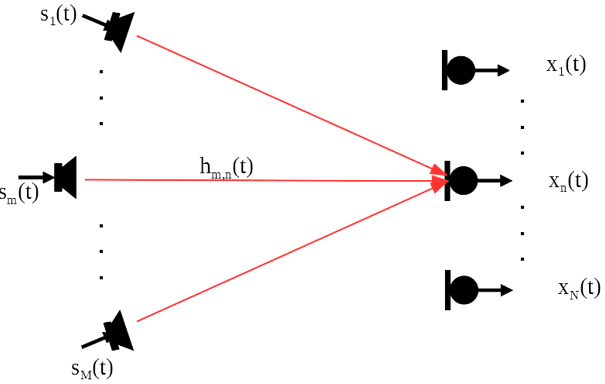Minimum Variance Distortionless Response(MVDR) beamforming is a technique widely used in multi-channel acoustic signal processing. It is general enough to form a common framework to design beamforming algorithms for various physical configurations.
We assume that there are M sources that create a sound field as below. There are N microphones of a microphone array in the sound field. As shown in the figure below.

The captured sound for the n’th microphone
If our target is s1(n), we can lump all other sound sources together into one interference term,
Vectorizing the microphone captures, we have,
where
We assume that we can separate into two orthogonal components,
where I and Q denotes the in-phase and quadrature components of with respect to
.
and
.
By the orthogonality principle, we can derive the MVDR solution,